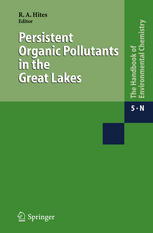

Most ebook files are in PDF format, so you can easily read them using various software such as Foxit Reader or directly on the Google Chrome browser.
Some ebook files are released by publishers in other formats such as .awz, .mobi, .epub, .fb2, etc. You may need to install specific software to read these formats on mobile/PC, such as Calibre.
Please read the tutorial at this link: https://ebookbell.com/faq
We offer FREE conversion to the popular formats you request; however, this may take some time. Therefore, right after payment, please email us, and we will try to provide the service as quickly as possible.
For some exceptional file formats or broken links (if any), please refrain from opening any disputes. Instead, email us first, and we will try to assist within a maximum of 6 hours.
EbookBell Team

4.7
16 reviewsThe environment around the Laurentian Great Lakes region has been adversely affected by agricultural runoff, urban waste, industrial discharge, landfill leachate, and atmospheric deposition. Although there have been some improvements over the last 20 years, persistent toxic organic pollutants are now a serious problem. This book brings together what is known about the major classes of these pollutants in the Great Lakes. Each chapter reviews our knowledge of the extent of contamination of the various parts of the Great Lakes ecosystem (air, water, sediment, fishes, birds, etc.), what is known about the trends over time of this contamination, and knowledge about the mechanisms by which these pollutants are mobilized in the lakes. Detailed information is presented on polychlorinated biphenyls, polychlorinated dibenzo-p-dioxins and dibenzofurans, pesticides, toxaphene, polychlorinated naphthalenes, polycyclic aromatic hydrocarbons, brominated flame retardants, and perfluoroalkyl acids. These reviews make this volume an invaluable resource for all those involved in environmental research, measurements, and decision making.